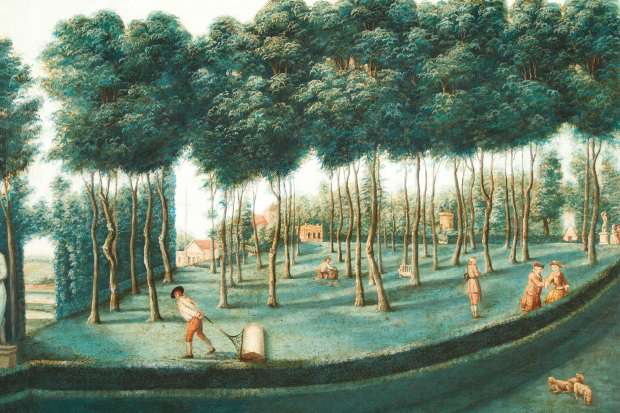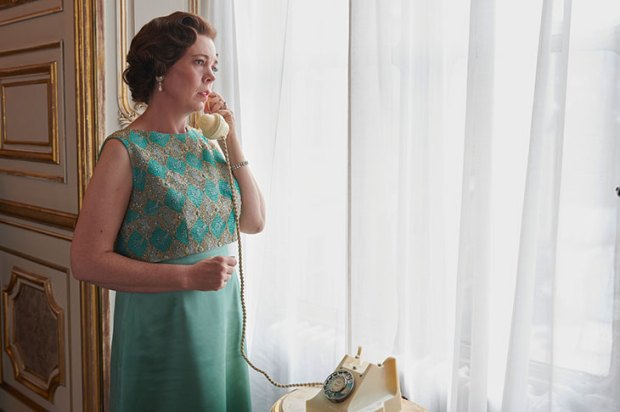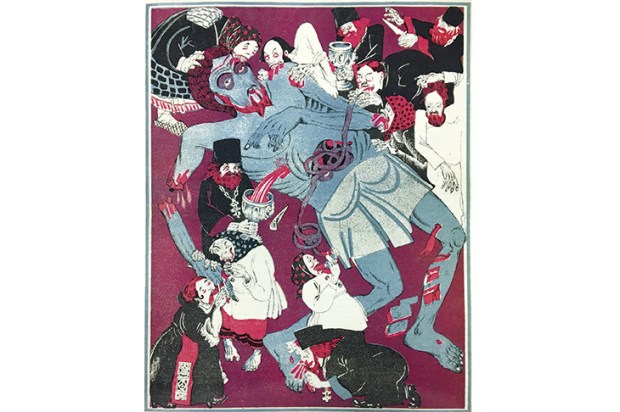One of the default settings of garden journalists is the adjective ‘painterly’ — applied to careful colour harmonies within a border (or equally considered clashes) and long, swooping vistas. It evokes soft sfumato smudges of pink and green, much as I imagine the interior of the late Queen Mother’s wardrobe must have looked. But it’s also misleading. Among minor inconsistencies of British culture is that, despite the national obsession with gardening and an attachment to landscape painting, the two have failed to find one another. We still have no more than a fitful tradition of garden painting.
Granted there have been moments. Under the later Stuarts, a gaggle of Netherlandish artists produced paintings and engravings that offered the viewer aerial panoramas of country houses within their garden and landscape settings. Jan Kip, the brothers Leonard and Jacob Knyff and Jan Siberechts all created images that, like contemporary formal gardening, straitjacketed their subjects into tight geometric patterns. At their busiest such pictures read like diagrams of particularly complex electric circuits, as in Leonard Knyff’s ‘Clandon Park’ of 1708, with its lifeless rows of lollipop trees. Wholly absent is any suggestion of the garden as a region of pleasure or, perish the thought, nurture.
At the other end of the spectrum is the only home-grown school of English gardening painting, led by a trio of gifted 19th-century watercolourists: Beatrice Parsons, George Samuel Elgood and Ernest Arthur Rowe. Theirs is the art of the herbaceous border, exotic shrubbery and occasionally the cottage garden, and diametrically opposed to the earlier tradition. Where the Dutchmen focused on line and plan, the Victorians went for colour. As vivid as Berlin woolwork, crackling with the same synthetic vibrancy as the century’s new aniline dyes, the paintings of Parsons, Elgood and Rowe celebrated in Technicolor a plethora of new introductions at a time when plant-hunters knew their business and cheap garden wages facilitated planting schemes of dazzling profusion. Possibly the choice of watercolour captures the limpid quality of English sunlight and the fleetingness of garden flowers. Most of all, these paintings rejoice in the beauty of the man-made garden, a self-contained, artificial enclosure that reimagines through Victorian eyes Eden at its most orderly and delightful, and it is significant that the tradition did not survive the first world war.
Leaving us with what? The connection between these divergent approaches is swank. Implicit in the work of both schools are suggestions of showing off. These garden paintings are an alternative portraiture, another notch on the bedpost for plutocrats who had already commissioned images of their families, their homes, their horses and their hounds. If the engravings of the later 17th century celebrate landownership, the Victorians’ watercolours offer a paean to the combined productivity of extensive costly glasshouses and a large outdoor staff. Neither of which, I’d like to suggest, is a typical gardener’s impulse.
There are historical reasons why Britain lacks a consistent tradition of garden painting. The ‘natural’ landscapes created for country houses across the kingdom from the 1740s onwards, for example, denied any distinction between garden and landscape and robbed potential artists of their subjects. But perhaps the real answer lies within gardeners themselves. If gardening as a national pastime is about anything, it’s about tending and cultivating. Annually our gardens offer us a reaffirmation of the cycle of birth and death. The gardener’s victories are as short-lived as flowers and equally sweet in their evanescence. Gardening seldom provides grounds for complacency.
Within the relationship between garden and gardener dominance shifts, love and hate oscillate. The best English garden painting emerges from that occasionally exasperated loving relationship, like Constable’s views of the kitchen and flower gardens created by his mother at East Bergholt House in Essex shortly before her death, or Cedric Morris’s saturated paintings of the irises he loved so much that he devoted himself to breeding new ones.
There are exceptions. Balthasar Nebot’s paintings of the gardens at Hartwell House, from the late 1730s, present the work and leisure hours of a whole society, while Richard Wilson’s country-house views from the following decades depict heroic settings for epic deeds, their horizons bathed in golden light. Such paintings capture an essential truth of gardening: with artistry, there is always room for improvement.
Got something to add? Join the discussion and comment below.
Get 10 issues for just $10
Subscribe to The Spectator Australia today for the next 10 magazine issues, plus full online access, for just $10.
You might disagree with half of it, but you’ll enjoy reading all of it. Try your first month for free, then just $2 a week for the remainder of your first year.














Comments
Don't miss out
Join the conversation with other Spectator Australia readers. Subscribe to leave a comment.
SUBSCRIBEAlready a subscriber? Log in